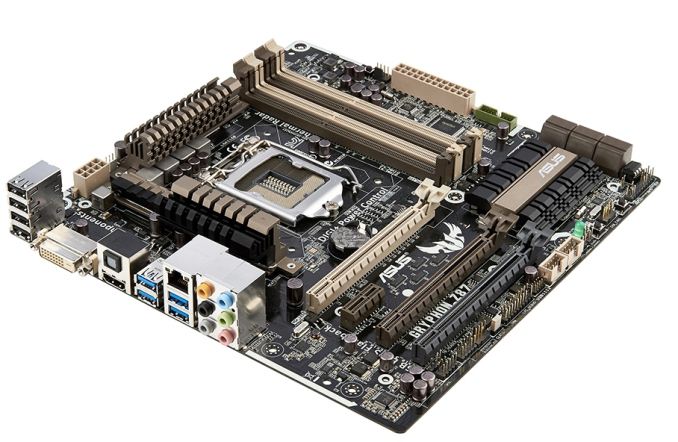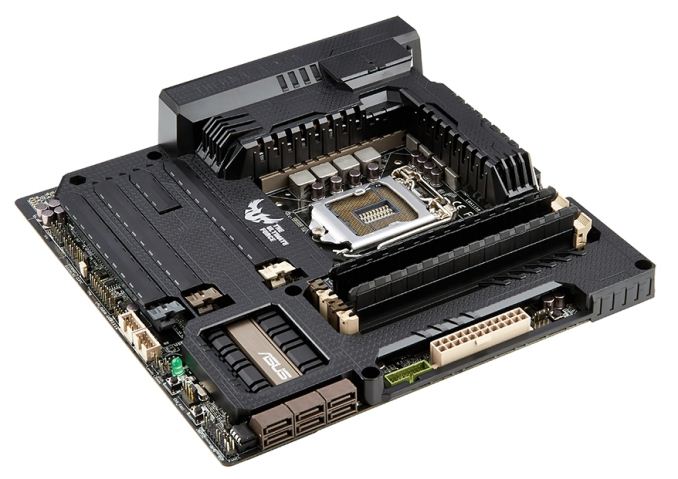ASUS TUF Z87 Gryphon Review
by Ian Cutress on February 3, 2014 10:00 AM EST- Posted in
- Motherboards
- Asus
- Z87
- TUF
ASUS TUF Z87 Gryphon Conclusion
When covering the Z87 Gryphon, or any TUF product, it is hard not to keep mentioning the warranty status. This is what the line is based on after all – a higher rated component, or ones in the higher end of the quality/yield spectrum, in order to provide that extra longevity. This is akin to Samsung making SSD NAND and keeping the best for themselves – the TUF range aim to source whatever components they put on the board from the higher echelons of production.
As a result, the special parts and warranty do come in the form of extra cost. You get what you pay for, right? The Gryphon has a rough time competing against other products in the same price segment for feature set. The Gryphon comes with no extra SATA Controllers, no extra USB 3.0 controllers or hubs, no power/reset buttons, no two digit LED, and so on. This all helps in keeping the component count down on a product (there is less to go wrong), but ultimately this also begs the question of whether a user needs more than six USB 3.0 ports, or more than six SATA 6 Gbps ports. Users can use PCIe cards if they needed more, some would suggest.
If we put the extended warranty and component choice out of our minds for a second, then the Gryphon has several features not on the regular channel market segment. First up is the number of temperature sensors on board. I counted 10, which includes three sensor headers for users to connect to other parts around the case (hard drives, PCIe cards). These tie into the fan control software which allows two point gradient configurations of all six 4-pin fan heads on board, and each fan profile can be tied into a weighted average of any of the sensors. For example, the CPU fans can rely on a profile where the temperature is calculated as 55% the CPU temperature, 35% the DRAM temperature and 10% the GPU temperature.
The Gryphon also offers an additional ‘Fan Overtime’ feature which keeps the fans spinning after the system is shut down in order to allow the equilibration of air inside and outside the case. This can be seen as important in humid climates, where hot air inside the case can cause inside condensation as it cools down. We have seen similar aspects on other motherboards, but this is the first time I have seen it on an ASUS product.
The Gryphon Armor Kit is sold separately to the motherboard and allows the board to be encased in a dust blocker that also forces cooling around the components on the motherboard. The rear plate also helps increase the rigidity of the motherboard due to large GPUs or awkward mounting locations.
While the Z87 Gryphon does not have overclocking as its primary focus, we achieved 4.6 GHz with our CPU sample, in line with many other Z87 motherboards we have tested before. Users looking for an automatic overclock will have to probe in the BIOS some to find them, but we get 4.1 GHz to 4.3 GHz within a few button presses easily. Performance is geared more towards longevity as well, so other motherboards might offer better stock performance too.
The Z87 Gryphon aims to sell on its main features: a five year warranty paired with the micro-ATX form factor. For that it does quite well, and ASUS are filling a well requested hole in their line-up. We have the Sabertooth in to review as well, which may satisfy the need for extra functionality, albeit in a larger size.












62 Comments
View All Comments
bigboxes - Monday, February 3, 2014 - link
My P6T Deluxe Version 2 says otherwise. Agree with tim851.Samus - Friday, February 7, 2014 - link
Ahh, P6T...I miss my Gen 1 i7 system. What a solid platform.warezme - Saturday, February 8, 2014 - link
Firestrike or any benchmark numbers are irrelevant without knowing what resolution and settings. The same benchmark run at 800x600 and Low settings will score totally different number when run at 1920x1080 Ultra settings.A5 - Monday, February 3, 2014 - link
Huh. Probably would've bought this if it were out when I built my Haswell system last year.willdeng - Monday, February 3, 2014 - link
There's an error in the article. "From left to write are four USB 2.0 ports, a DVI-D port...":D
Senti - Monday, February 3, 2014 - link
I currently use Asus Sabertooth x58 MB and it works quite well: 211 base clock, CPU 2.8 -> 4.0 with minimal overvolt, RAM 1333 -> 1700, good placement of extension slots, PCI slot (I use it!).The only complain is NB is really hot and I was not comfortable with designed passive cooling so had to stick cooler on it.
It may not have many fancy features of top boards but indeed looks solid. MB before that was Biostar TPower x58 which died exactly a month after warranty ended.
Flunk - Monday, February 3, 2014 - link
Luckily they've fixed this problem because north bridges no longer exist they can't possibly get hot.Deelron - Monday, February 3, 2014 - link
Same here, have been running a i7 950 @ 4.2 ghz in the Sabertooth X58, and except an Ethernet port failure (which I'm not sure when it happened, I was using a dedicated card for Ethernet early on but accident plugged it into the built in after a computer move and it refused to be recognized by windows) it still runs like a champ.Iketh - Saturday, February 8, 2014 - link
maybe because you still had it disabled in bios?aznxk3vi17 - Monday, February 3, 2014 - link
"it is worth noting that with arrangement""Left to write"
Edits!